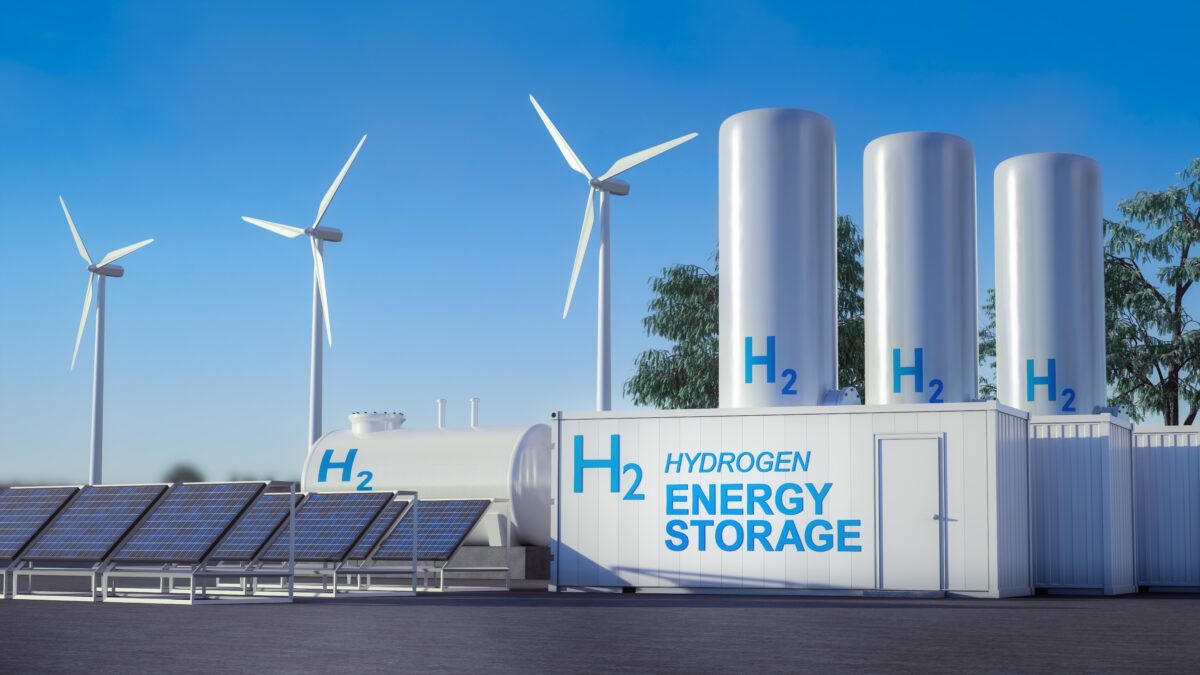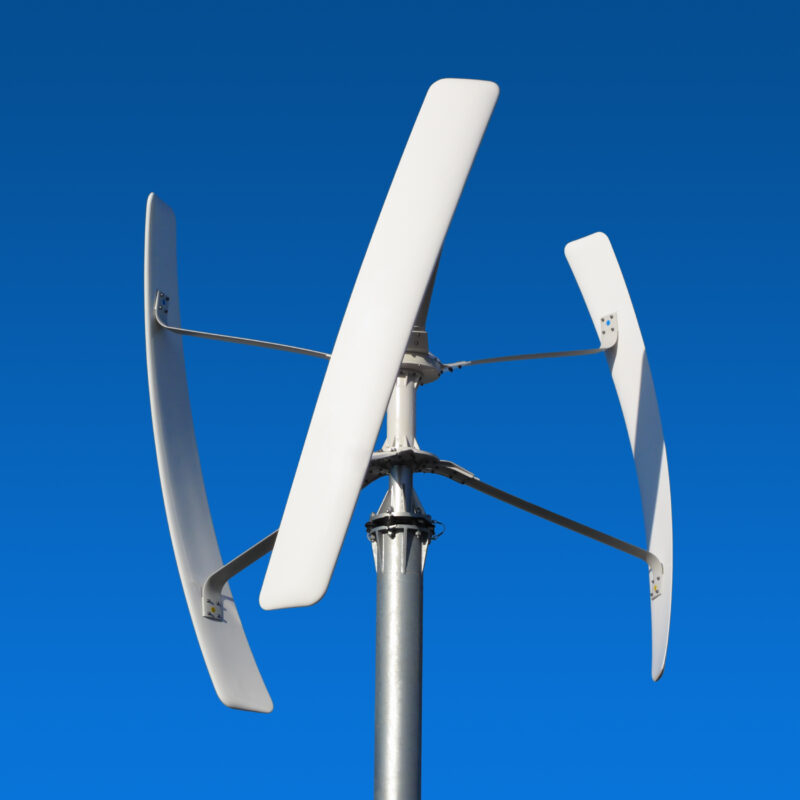In recent years, Europe has made huge steps towards energy transition. Big wind farms, both on-shore and offshore, were a main part of that process. Now, the European Union wants to democratize the energy system so that citizens can participate, too. In this plan, energy end-users (households, companies, communities) can generate their own green power thanks to energy cooperatives.
Lately, energy cooperatives have become an important factor in Europe’s shift towards renewable energy. With growing concerns over climate change and the need to reduce carbon emissions, renewable energy cooperatives in Europe are leading the charge in embracing sustainable energy solutions. One of the key renewable sources being used by these cooperatives is wind energy. Projects like community-owned wind farms and decentralized wind energy systems are helping rural and urban areas to generate clean, reliable energy.
As part of the EU’s broader climate goals, energy cooperatives are essential in supporting the decentralization of the energy system, giving citizens the power to directly contribute to achieving EU renewable energy targets. These cooperatives are also empowering communities to become more independent, creating local jobs, and ensuring that the benefits of the energy transition are shared equitably. A big part of that process are small wind turbines, which help communities generate their own green power.
What Are Energy Cooperatives?
An energy cooperative is a new model of energy production, where the members are also both the customers and decision-makers. In opposition to typical energy providers, which are of course focused on profits, energy cooperatives in the EU are driven by the needs of the local communities and their goal of producing energy that is not only clean but also cheaper. In these types of cooperatives, everyone has an equal voice and impact on the decisions.
Community wind energy projects in Europe allow local residents to pool their resources to build wind energy infrastructure. Ownership of needed structures is collective. All the members of the collective not only have access to affordable energy but also can be a part of the transition from fossil fuels to green energy.
Wind energy cooperatives are the best example of how community-led initiatives can directly contribute to the production of renewable energy. By investing in cooperative wind farms and utilizing small wind turbines designed for local energy needs, these cooperatives can generate electricity from a clean and inexhaustible resource.
These types of partnerships make it easier for citizens to access the funding, expertise, and technology needed to develop their own wind energy solutions. Initiatives such as community electrification support rural development thanks to the profits from energy production which are kept within the local community. For example, wind energy for rural cooperatives in Europe has been a significant contributor to local electrification efforts, ensuring that even remote communities have access to reliable and affordable power.
The Benefits of Wind Energy Cooperatives for Local Communities
Wind energy cooperatives for self-sufficient communities in Europe have numerous benefits. The most important factor is surely the fact that they allow communities to take control of their own energy production. With that they reduce reliance on large energy providers. Not only does it strengthen energy security but also helps stabilize energy prices, making it more affordable for local residents.
Surplus energy produced by their own wind farm, big or small, can be returned to the grid, which creates additional revenue. It can lower energy prices for the members of the cooperative, making renewable energy more affordable.
In addition, cooperatives often reinvest profits back into the community, funding local projects or providing bill credits to their members. This can create a positive feedback loop where the success of the wind energy project directly benefits the community. By contributing to the decentralized wind energy system in Europe, these cooperatives are also playing a crucial role in reducing carbon emissions and helping meet the EU’s ambitious climate goals.
Do you have sustainability goals that you want to reach with the help of small wind turbines? Contact us or schedule a meeting where we explore how our turbines can help you reach those goals!
How Wind Energy Cooperatives Work in Europe
The cooperative model ensures that all decisions, from the location of the wind turbines to the pricing of the energy produced, are made democratically. Each member has a vote, and decisions are made collectively, ensuring that the cooperative operates in the best interest of its members. European wind energy cooperatives also prioritize sustainability, focusing on long-term benefits for the community rather than short-term profits.
How to Start a Wind Energy Cooperative in Europe
Wind energy cooperatives in Europe typically start with a group of local residents who come together with the shared goal of generating renewable energy for their community. The cooperative then pools finances, often with help from the government (grants, loans), to invest in wind energy infrastructure. Small wind turbines are frequently used for these projects, especially in rural areas where energy demand may be lower and the conditions are perfect for these types of structures. For larger communities or areas with higher energy needs, community-owned wind farms are developed, capable of generating enough power to serve the entire community.
One of the biggest challenges that energy cooperatives in Europe have to face is surely securing the necessary capital needed for investing in wind energy infrastructure. Thanks to forming renewable energy partnerships their members can in some way leverage bigger players on the market and overcome financial hurdles. Additionally, affordable wind turbines for cooperatives in Europe are becoming more accessible, thanks to advances in technology and supportive policies from the European Union.
European Wind Energy Cooperatives and Sustainability: Case Studies
In countries like Belgium and Ireland, wind energy for cooperatives is becoming increasingly popular, with communities collaborating to create renewable energy partnerships.
Energy Cooperatives in Ireland
While Ireland is not one of the biggest players in Europe’s goal of reaching carbon neutrality, local communities are doing everything they can to help add to the green energy produced by the Irish winds. Thanks to a lot of rural areas and a very windy climate, Ireland allows its citizens to create green energy for community-led projects. Energy cooperative „Aran Islands Renewable Energy” is the best example of that.
Aran Islands are located on the west coast of Ireland just off Galway. While very idyllic, they are also very remote, which comes with its challenges. Islands are dependent on expensive and polluting fuels needed for electricity production and are connected to the rest of Ireland through a subsea cable. In 2016, a failure of this cable resulted in four days without power for over 400 residents of the islands.
This dependency on faulty infrastructure and high prices drove the residents to form their own energy cooperative in 2012. After many setbacks Aran Islands are right now striving to achieve 100% renewable energy by 2030. They participate in many innovative programs like Horizon 2020 and InterReg pilots. They also developed their own wind power plant. Aran Islands are the best example of how even small communities can take charge and produce their own clean energy.
Other energy cooperatives in Ireland are Drumlin Wind Energy Co-op, Kerry Renewable Energy Co-op, Claremorris & Western District Energy Co-Op, Templederry Community Wind Farm, and many more.
Energy Cooperatives in Belgium
Belgium has a long history of energy cooperatives. One of the first co-ops was founded in the 90’s – it’s Ecopower. What started as a project between friends right now powers 50,000 homes in Belgium with 100% clean energy. Ecopower can boast its infrastructure: in a few decades, it went from one old windmill to 23 wind turbines.
While Ecopower is surely the most successful energy cooperative in Belgium or even in Europe, several others are a part of Belgium’s energy transition: REScoop.Vlaanderen, NAVITAS Energie cvso, Zonnewind CV and many others.
Freen Wind Turbines for Cooperatives in Europe
Small wind turbines are an excellent fit for energy cooperatives in Europe. They are a lot more cost-effective and flexible alternative to large-scale wind farms. As part of the broader push for sustainable energy solutions for cooperatives, small wind systems require less investment and are well-suited for both rural and urban areas, making them accessible to a wide range of communities. Unlike large turbines, which need significant capital and big open spaces, small wind turbines can be easily integrated into distributed energy systems in Europe, bringing wind power to local energy networks. They are also ideal for cooperative-owned wind energy solutions in rural Europe, helping smaller communities achieve self-sufficiency without the financial burden of larger projects
By utilizing Freen small wind turbines for community energy cooperatives in Europe, these smaller-scale systems contribute to green energy for community-led projects and enhance European wind energy cooperatives’ sustainability efforts. Moreover, their low cost aligns with the cooperative model’s goals of equitable resource distribution. Through renewable energy partnerships for European cooperatives, small wind turbines can play a critical role in driving cooperative wind farms and supporting the shift towards a sustainable model for Europe’s energy future.
Are you interested in the benefits of wind turbines and their possible impact on your carbon footprint? Contact us to book a free feasibility study and check the wind potential in your region!
Wind Energy Cooperatives as a Sustainable Model for Europe’s Energy Future
The future of energy cooperatives in Europe looks promising as most countries intensify their efforts to transition to renewable energy and meet ambitious climate goals. With the European Union’s commitment to achieving net-zero carbon emissions by 2050, energy cooperatives will probably play a crucial role in this shift. Their community-driven model, which prioritizes local engagement, sustainable practices, and the equitable distribution of energy, aligns with the EU’s push for decentralized wind energy in Europe and renewable energy partnerships.
However, renewable energy cooperatives in Europe also have their challenges. Access to financing and securing suitable sites for wind farms and other renewable projects remain significant hurdles. To overcome these barriers, cooperatives will need to strengthen collaborations with local governments and policymakers, ensuring that supportive frameworks are in place. Despite these obstacles, the potential for growth remains high. As demand for wind energy solutions and community-owned wind energy systems continues to rise, cooperatives may help communities take control of their energy needs.







